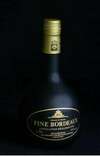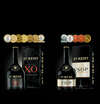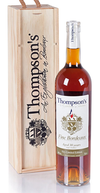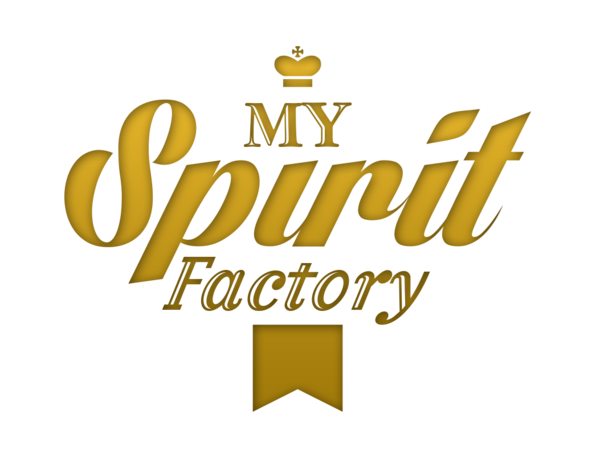Fine Bordeaux: the most cognaçaise of wine brandies (after cognac) ?
Armagnac, cognac and fine bordeaux: Aquitaine brandy as a common ancestor.
Created in 1974, fine Bordeaux wine becomes a Geographical Indication on January 15, 2015. Situated between Armagnac in the south and Cognac in the north, fine Bordeaux wine is mainly found in the sixty or so appellations that make up the Bordeaux vineyard. But although Bordeaux and the surrounding area are indeed specialized in wine production, there is a tradition of distillation in this area at least as old as Armagnac and Cognac. And at a time when Bordeaux wines are facing a slump in sales in France and abroad, it is interesting to look at a know-how that could give new ideas to producers in the Gironde region?
Thanks to the work carried out by Francis Brumont and compiled in "Les eaux-de-vie d'Armagnac, des origines à la Révolution" (Bulletin de la Société Archéologique du Gers, 2011), we know that sporadic shipments of eaux-de-vie were made from Bordeaux as early as 1513, then from La Rochelle from 1530 onwards to the Netherlands, Ireland and the Baltic Sea. And even if these were just a few of the many barrels containing wine, marked the beginning of the commercialization of brandevin (brandewijn in Dutch / brandy in English), which would later give rise to cognac, armagnac and fine bordeaux.
The ports of Nantes and La Rochelle became the most important places for the production and shipment of wine brandies in 1600 because a large number of boilers were located near the landing stages. Then the distillation of wine gradually spread to the hinterland from 1620 onwards in the direction of Cognac, Bergerac and the Bordeaux highlands towards Marmande and Agen, while avoiding Bordeaux itself. This is because the wines produced in the direct vicinity of Bordeaux are of good quality and are therefore not distilled.
In the wake of this, Bayonne also saw a boom in distillation, with stills located near the port, in the Chalosse and then the Tursan from 1630 onwards, and the movement continued as it moved even further inland to create what was to become Armagnac in 1650.
When arriving in Bordeaux, the eaux-de-vies are initially confused between those from the Bazadais, Agenais, Armagnac, Libourne and those distilled on the spot from unsold wines.
French brandy thus occupies an entire Atlantic arc from Bayonne to Nantes, but the Dutch are beginning to distinguish different qualities according to origin. In particular Cognac brandies which are more expensive than those from Bordeaux, Nantes, La Rochelle and Bayonne. And this price difference will increase more and more to the benefit of the cognac in the XVIII and XIX centuries, whose production area is not yet fixed when the phylloxera landed in 1872.
Cognac to Bordeaux!
Fine Bordeaux is intimately linked to Cognac brandy because its territory historically extends into the Hauts-de-Gironde, on the Blaye side, in the immediate vicinity of the Cognac vineyards. An article from Sud Ouest dated 30 August 2013 comes back to the sometimes artificial border separating the Charente Maritime from the north of the Gironde, the two entities having a terroir in common:
Because the eaux-de-vie distilled in the Gironde can claim the name cognac, which still only designates a large commercial region extending as far as Bordeaux. (Judgment of the Court of Bordeaux of 11 August 1886, confirmed by the Civil Chamber of Cassation of 21 July 1888). However, eaux-de-vie distilled near Cognac are considered to be superior.
For this reason some Bordeaux or Libourne trading houses are moving to the Charente. Others set up a subsidiary and opened a production site, such as Marie Brizard, who wanted to compete with Hennessy and Martell by setting up in Richemont for a quarter of a century between 1890 and 1916 (on the hill overlooking Cognac at the place called Mont Brizard near the IREO and near the station). The aim was to stock up on 'real 3-star Cognac eaux-de-vie' as there were problems of quality and fraud. See the article by Hubert Bonin written in 1988 "Marie Brizard on the assault on the great cognac houses, the dream of a third great house".

In the end, the adventure turns into a fiasco because the Marie Brizard brand is too much assimilated to the anisette which made its reputation in the 19th century and can neither ensure its supply nor promote its brand of cognac. It must be said that the local cognac houses did not really help the Bordeaux company in its efforts to capture the bulk of the eaux-de-vies available... The mother company rang the end of the game and repatriated its marbles to Bordeaux in 1916.
In fact, never before have the Charente and the Gironde seemed so far apart as at the beginning of the 1910's because in the meantime, the Cognac and Bordeaux appellations have erected impermeable borders.
Gironde wine brandy Vs Charente wine brandy
The Cognac commercial appellation became a controlled appellation with the decree of 1st May 1909 which recognised a production area extending over the departments of Charente, Charente Maritime, Deux-Sèvres and the Dordogne. The work of the geologist Henri Coquand was taken up again and a map of the cognac crus was drawn up.
However, the history deployed in the specifications for fine bordeaux teaches us that producers in the north of the Gironde initially refused to be integrated into the cognac appellation area and accepted their integration into the bordeaux appellation area :
What are their motivations? We don't know today, but it seems that they bet more on the attractiveness of Bordeaux's vineyards on a global level. This sounds the death knell for the production of Bordeaux eaux-de-vie, relegated far behind wine production.

Moreover, the creation of the Bordeaux wine appellation area by the decree of 18 February 1911, on which producers of Bordeaux brandies now depend, was motivated by a political issue that can be summed up in the slogan 'Only the Gironde!Thus one can only produce bordeaux in this department (this division is also used in the Marne, which grants itself the exclusive right to 'champagne' and provokes very violent revolts in the neighbouring department of Aube, which will lead to reconsidering the area and to include this department as well as some communes of Aisne and Haute-Marne in the production of champagne).
The Gironde is definitely turning its back on the cognaçais. So what are the remaining possibilities for producers of Gironde brandies ?
Cognac has not been produced here since 1909. There is still the possibility to label them under the names of Brandy (but we will see that this is not going to last) and Bordeaux brandy, even if the latter is not as good as Cognac brandies. Hence the idea of finding a new name to stand out...

The law of 20 February 1928 requires eaux-de-vies to associate the word fine with a wine appellation ('fine meaning eau-de-vie): fine cognac, fine champagne (decree of 13 January 1938 defining a blend of Grande Champagne and Petite Champagne comprising at least 50% Grande Champagne, not to be confused with Fine Champenoise in the Marne), Fine Grande Champagne, Fine Petite Champagne, Fine Borderies or Fine Fins Bois. So why not use Fine Bordeaux? This idea is going to make its way for several decades, especially with the following events that are going to impact local producers.
February 23, 1942 saw the creation of the appellation 'Eau-de-Vie de Vin d'Aquitaine' (AOR), which can only be distilled within the cognac and armagnac production areas, in an attempt to give a local anchor to brandy produced in the region outside these recognized areas. But above all, it became a way out for distillers of French and Gironde wine brandies, who were forbidden to use the name brandy under the 1946 Madrid Treaty until 1989!
So there are not many options left for the Gironde distillers who see their production of wine brandies decreasing with the loss of brandy, so their main outlet since they have separated from cognac . Bordeaux brandy is entering an irremediable decline phase, unlike cognac on the one hand and AOC Bordeaux on the other.
But it was without counting on the will of a family distillery and a subject of Her Majesty the Queen of England, Simon Thompson .
Fine Bordeaux: a potential to be exploited
The Distillerie Vinicole du Blayais founded in 1970 by grouping together several distilleries in the region decided to launch a wine brandy even more specialised than Aquitaine brandy, by refocusing on grape varieties adapted to the soils of Bordeaux. In 1973, approval tastings were held with the aim of federating producers around a characteristic product. The idea was to differentiate itself from the Aquitaine wine brandy while using local know-how from the old cognac production (including double distillation).
This approach marks the birth of Fine Bordeaux with the Decree of August 5, 1974 defining the regulated appellation of origin, which includes the following raw materials: 70% minimum of pigeon and ugni blanc and 30% maximum of accessory grape varieties merlot blanc, mauzac and ondenc. Ageing is a minimum of 12 months and the vintage is at least 10 years old. And the bottles of fine bordeaux are traditionally similar to those of brandy.
However, there are only 325 hectares of ugni blanc and colombard in the Gironde, which are the main grape varieties, an average of 260hl AP. This implies revising the specifications by including Semillon when the geographical indication is granted on 14 January 2015.


In the meantime, however, the production of fine Bordeaux wines collapsed in the 1980s to the point of practically disappearing. The possibility of producing French brandy, which was recovered in 1989, completed the marketing of the product, which was struggling to make a place for itself in a region renowned for its wines, then in the firmament in the 1990s.
Only a few stocks remained when the most Aquitaine of British residents, Simon Thompson, discovered the spirit during a visit to the Gironde. He was already familiar with cognac but was surprised not to see similar alcohol in the Bordeaux vineyards. To which he was told that there is fine Bordeaux, distilled in Blaye and Coutras. He buys the available stock and launches the Thompson's brand which will help to make this spirit known in Bordeaux itself as well as abroad, by dusting it off.

Thus, even if fine bordeaux may seem anecdotal in terms of volume and strength compared to cognac, brandy and armagnac, the interest lies in its shared history with these spirits. A history that is both meaningful and linked to a know-how that still endures among some enthusiasts in the Gironde.
Perhaps this heritage can give some ideas to the Bordeaux wine industry, which has been hit hard by competition from 'new world' wines and the rise of the Côtes du Rhône and Languedoc-Roussillon? Or perhaps it can help the vineyards of Cognac and Bordeaux to exchange ideas with each other, as no one is better off seeing their neighbour caught up in a major crisis?
JÉRÔME SAVOYE
Thanks to Grégory Crouvizier of the Distillerie du Blayais for his precious help in writing this article.
Ask for a free call of 45mn to study any project under development or under study and exchange together:
Contact me for any development of spirits, packaging and tailor-made services for your company (support in organisation, pack development, quality control, drafting of product sheets...).
Start-ups and entrepreneurs wishing to create new spirits can download the spirit development mind map for free here :
https://www.myspiritfactory.com/
